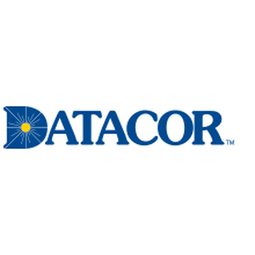Customer Company Size
SME
Region
- America
Country
- United States
Product
- eChempax
- Chempax VB
Tech Stack
- ERP Systems
- CRM Systems
Implementation Scale
- Enterprise-wide Deployment
Impact Metrics
- Productivity Improvements
- Cost Savings
Technology Category
- Application Infrastructure & Middleware - API Integration & Management
Applicable Industries
- Chemicals
Applicable Functions
- Sales & Marketing
- Business Operation
Use Cases
- Supply Chain Visibility
- Predictive Replenishment
Services
- System Integration
About The Customer
Fitz Chem Corporation is a customer-centered specialty chemicals distributor based in Itasca, IL. The company has five locations and has been serving the Central United States since 1985. Fitz Chem caters to a variety of industries including adhesives, construction, graphic arts, home and personal care, institutional and industrial cleaning, paints and coatings, plastics, and rubber. The company is recognized for its superior customer service and has a team with the knowledge and technical experience to help solve the toughest formulation challenges.
The Challenge
Fitz Chem Corporation was facing several challenges in their operations. The company was struggling with improving communication throughout the business, especially between their ERP and CRM systems. This lack of effective communication was leading to redundancies in work processes, which was inefficient and time-consuming. Additionally, the company was finding it difficult to effectively cultivate and manage their customer data. This was hindering their decision-making process and overall business efficiency.
The Solution
To address these challenges, Fitz Chem Corporation implemented eChempax and Chempax VB solutions. These solutions helped to improve communication throughout the business, particularly between the ERP and CRM systems. This eliminated redundancies in work processes and improved the cultivation of customer data. The solutions provided a 360-degree view of important business information, which created clarity in the decision-making process. Additionally, having a single database to reference information and notes saved a significant amount of time, effort, and money. The solutions also streamlined communication and collaboration between teams, resulting in greater employee productivity and effectiveness.
Operational Impact

Case Study missing?
Start adding your own!
Register with your work email and create a new case study profile for your business.
Related Case Studies.

Case Study
Honeywell - Tata Chemicals Improves Data Accessibility with OneWireless
Tata was facing data accessibility challenges in the cement plant control room tapping signals from remote process control areas and other distant locations, including the gas scrubber. Tata needed a wireless solution to extend its control network securely to remote locations that would also provide seamless communication with existing control applications.

Case Study
Advanced Elastomer Systems Upgrades Production
In order to maintain its share of the international market for thermoplastic elastomers AES recently expanded its Florida plant by adding a new production line. While the existing lines were operating satisfactorily using a PROVOX distributed control system with traditional analog I/O, AES wanted advanced technology on the new line for greater economy, efficiency, and reliability. AES officials were anxious to get this line into production to meet incoming orders, but two hurricanes slowed construction.
Case Study
Wireless GPS Tracking & Security Monitoring
Enhancing the security of hazardous freight and ensuring compliance with Homeland Security’s Transportation Security Administration mandate that all trains carrying chemicals capable of creating a toxic inhalation condition are equipped with on-board safety monitoring systems.

Case Study
Field Device Asset Management For Chemical Company in China
Chinese chemical subsidiary of multinational corporation serves customers throughout the world. Sales offices and research and technology centers are strategically located to provide rapid response to customer requests. Just two workers were assigned to maintain thousands of intelligent instruments in three production units, so they could do little more than react to device issues as they appeared. This costly maintenance method inevitably led to unexpected downtime when a critical instrument failed. Plant management recognized the need to change from reactive to predictive maintenance for all assets, including instruments and control valves, but help was needed in implementing such a technology-based initiative.

Case Study
Industrial Workforce Mobility for Improved Safety & Operations
Huntsman Corporation, a global manufacturer and marketer of differentiated chemicals, undertook an aggressive program to eliminate injuries, product defects, and environmental releases at their Port Neches facility. Termed “Project Zero”, this program required a completely mobile solution to empower operations and maintenance personnel to capture defects, track work progress and make process and safety related decisions in real-time.




